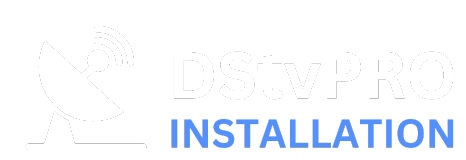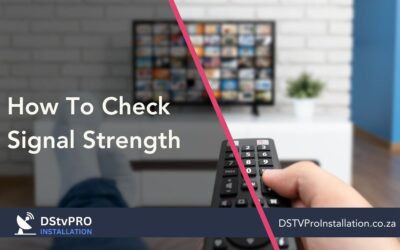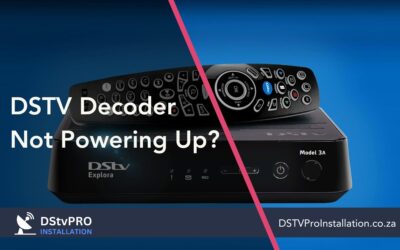Experiencing the E48-32 “No Signal” error on your DStv can be incredibly frustrating. This guide aims to demystify the issue, providing an easy-to-follow, step-by-step approach to resolving this common problem. By comprehending the root causes and implementing practical solutions, you can rectify the signal loss effectively. Let’s embark on this troubleshooting journey together and restore your DStv service to optimal functioning.
What causes the signal loss on your DStv decoder?
| Common Causes | Solutions |
|---|---|
| Misaligned Satellite Dish | Check the alignment and adjust it to face the correct direction. Consider professional assistance if needed. |
| Faulty LNB | Replace the faulty LNB. Make sure the new one is properly aligned. |
| Loose Cables | Inspect all the cables and connections. Tighten any loose cables. |
| Bad Weather | While you can’t control the weather, using a larger dish or a dish cover can improve reception during bad weather. |
| Incorrect Decoder Settings | Reset your decoder to factory settings. If you’re unsure how to do this, refer to the manual or get help from a professional. |
| Damaged F-Connector Plug | Inspect the plug and replace it if it’s damaged. |
| Loadshedding or Power Outages | Once power is restored, your decoder should reboot and return to normal. If it doesn’t, try resetting your decoder. |
| Decoder Software Problems | Perform a software reset or update the software version. If the issue persists, the decoder might require servicing or replacement. |
| Blocked Line of Sight | Clear any obstructions between the dish and the sky, such as trees or buildings. |
| Decoder Hardware Failure | If other solutions fail, the decoder itself might be faulty. Consult a professional or consider replacing it. |
Your DStv signal may be lost if your decoder resets to factory preset settings. This occurs when your decoder resets using the predefined LNB-type settings, which may not be appropriate for your particular decoder.
Quick Fixes for Signal Strength on DStv
Struggling with poor signal strength on your DStv? Don’t fret! Check out our quick fixes below for immediate solutions. For more insights and updates, make sure to catch our latest post on this topic on LinkedIn.
| Quick Fix | Description | Why It Works |
|---|---|---|
| Decoder Reboot | Power off and restart your decoder. | Resets the system and clears minor software glitches. |
| F-Type Connector Check | Examine the F-type connectors at the LNB and decoder’s back. | Ensures optimal signal transmission between the LNB and decoder. |
| LNB Alignment | Adjust the LNB’s skew angle according to your location and satellite. | Improves the focus of the signal towards the decoder. |
| Dish Angle Tuning | Alter the dish’s horizontal and elevation angles. | Fine-tunes the dish to receive a stronger signal. |
| LNB Replacement | Swap out a defective LNB with a new one. | Eliminates any hardware-related signal loss. |
| Relocate Dish | Move the dish to an area free from obstructions like trees and buildings. | Prevents signal interference from physical obstacles. |
| Tree Trimming | Trim or prune any foliage blocking the dish’s line of sight. | Clears the signal path for an uninterrupted viewing experience. |
Let’s look at several ways to improve the quality and strength of your DStv signal.
First, Try Resetting your DSTV Decoder!
Due to a problem with the DStv installation, your DStv reports no signal. A dish that is not positioned correctly, an LNB that isn’t working, a plug on an F-connector that isn’t connected correctly, loose cables, or the wrong decoder settings on a particular kind of LNB might all be to blame. As the video below shows, you may fix incorrect decoder settings by reverting your decoder to its factory defaults.
The issue is often not as complicated as it may initially seem. So, try these simple recommendations before contacting any approved DStv installer and possibly spending a sizeable sum.
You may regain your DStv signal with the aid of these suggestions. Who knows, maybe you’ll wind up saving time and money. Additionally, you’ll be aware of the location of the real problem.
Remember that some installers are dishonest and just trying to profit from you. Therefore, proceed with care.
When DStv displays no signal, what should you do?
To fix your DStv signal problems, you must first precisely pinpoint the issue. Technical expertise is not necessary for these straightforward actions.
Before doing these procedures, it is advised that you first verify the signal quality and strength parameters for your DStv.
This enables you to solve the problem fast. You may see the video below if you’re confused about determining the signal strength.
For Explora and standard HD decoders, decent signal strength is often more than 75%. Refer to my post on improving the quality and signal strength of your DStv if it is less than 50% strong. If your decoder’s strength and quality readings are both -1%, that implies there is no signal being received from the dish.
Follow these instructions to fix a DStv no signal error:
Step 1: Check the cords that connect to your DSTV
One of the most straightforward tests you can do alone is this one. Start by looking at all the DStv cables behind your decoder. Next, check for any DStv cables that are not currently connected. Make sure that every F-type connection is connected correctly. Here’s a video to help you figure out how to plug in the F-type connections if you’re having trouble:
How to attach F-type connectors to a coaxial DSTV cable
Confirm that all wires are connected to the appropriate decoder ports. Remember that pets, including dogs and cats, may pull your DSTV wires from under your decoder.
Reconnect any loose wires to the DSTV decoder if you locate any. Just connect the signal cable to the correct LNB-in and Unicable-in ports.
Step 2: Restart your decoder
Unbelievably, restarting your decoder may fix various issues, including frozen images and decoder failures.
So why not give it a shot? Decoders may be rebooted by holding the power button down for ten seconds or longer. Keeping this in mind, restarting your decoder can take some time. So, exercise patience! Continue to the next stage if this doesn’t resolve your issue.
Step 3: Examine the DStv satellite dish position
Check your satellite dish visually for corrosion and damaged arms. Most galvanized iron satellite dishes located near water are susceptible to rust.
Make sure the satellite dish’s bolts are tight as well. You should not be able to flip your dish quickly. Otherwise, your dish might easily go out of alignment due to severe gusts. Tighten the bolts after realigning the satellite dish if it can move freely.
A signal detector is necessary to correct your dish. The cause of your signal issue will be known, even if you cannot position your satellite dish manually.
Step Four: Examine your LNB
Your DStv cables’ ends are finished with silver metallic nuts. These nuts connect the LNB to your DSTV wires. They’re referred to as F-connectors. Therefore, confirm that they are correctly linked on the LNB.
Rust and loosening are common problems. Additionally, inspect the LNB for any issues. To regain the DStv signal, you must replace the defective LNB. Remember that the LNB must also be precisely aligned by tilting up and down.
Step 5: Call an accredited DStv installer (If the above fails)
Have you tried all of the suggestions above without any luck? If so, it may be time to contact a certified DStv installation in your region. In reality, the DStv expert will run some sophisticated tests to figure out what the issue is.
Wrapping Up
At DSTV Pro Installation, we’re committed to offering reliable and professional DStv services, ensuring you enjoy uninterrupted viewing. Our trusted specialists are available across South Africa’s metropolitan areas, providing unparalleled customer service.
Furthermore, our network of expert DSTV installers can be found across the breadth of Gauteng province, serving areas such as Roodepoort, Johannesburg, Krugersdorp, Centurion, Midrand, Pretoria, Kempton Park, and Sandton. You can rely on us for seamless DStv installations, giving you the best in-home entertainment.
FAQ
How do you fix a DStv after load shedding?
Load shedding can sometimes disrupt your DStv service. Once power is restored, the system should generally return to normal functioning if it doesn’t, try resetting your decoder by holding down the power button for more than 10 seconds, then releasing it. If the problem persists, you may need to check your DStv cables, dish alignment, or consult a professional installer.
How do I get my DStv signal back?
Regaining your DStv signal involves checking for loose or damaged cables, resetting your decoder, making sure your dish and LNB are properly aligned and functional, and potentially seeking help from a professional installer. Remember, the weather can also affect signal strength.
Is DStv affected by loadshedding?
Yes, like any other electronic device, DStv is affected by loadshedding. When power is cut, your decoder and satellite dish won’t work. Once the power is restored, your decoder should reboot and return to normal functionality. However, frequent power outages may potentially cause damage or setting disruptions to your decoder.
How do I reset my DStv decoder?
To reset your DStv decoder, hold down the power button on the decoder for more than 10 seconds, then release it. Your decoder will restart and should return to normal functioning.
What to do when decoder says no signal?
When your decoder says no signal, you should check your connection cables, reset your decoder, examine your satellite dish, check the LNB, and if needed, contact an accredited DStv installer or service center.
How do I fix unresponsive DStv decoder?
An unresponsive DStv decoder can often be fixed by resetting the device. If the decoder remains unresponsive after a reset, there might be a more serious issue that needs professional attention.
Is DStv decoder repairable?
Yes, in many cases, a DStv decoder can be repaired. If you’re experiencing problems, take it to an accredited DStv service center or MultiChoice branch for diagnosis and potential repairs.
How do I manually check my DStv signal?
To manually check your DStv signal, press the ‘Menu’ button on your DStv remote, then select ‘Information Central’. The signal strength and quality bars should ideally both be over 75%.
How do you know if LNB is bad?
If you’re getting a ‘no signal’ error on your DStv decoder, have poor picture quality, or some channels are missing, your LNB might be faulty. An accredited installer can accurately diagnose and replace a bad LNB.
Why is my decoder not showing channels?
If your decoder is not showing channels, it could be due to weak signal strength, a malfunctioning LNB, a misaligned dish, or even an expired DStv subscription. You’ll need to diagnose the issue properly to resolve it.

With over a decade of experience in satellite installation, Mthunzi is a seasoned Satellite Installation Technician at DStv Pro Installation. Recognized for his meticulous attention to detail and expert knowledge in signal troubleshooting, Mthunzi has successfully completed over 1,000 installations, earning a reputation for reliability and excellence. Certified and constantly updated on the latest technology, he’s the go-to professional you can trust for a seamless DStv experience.




